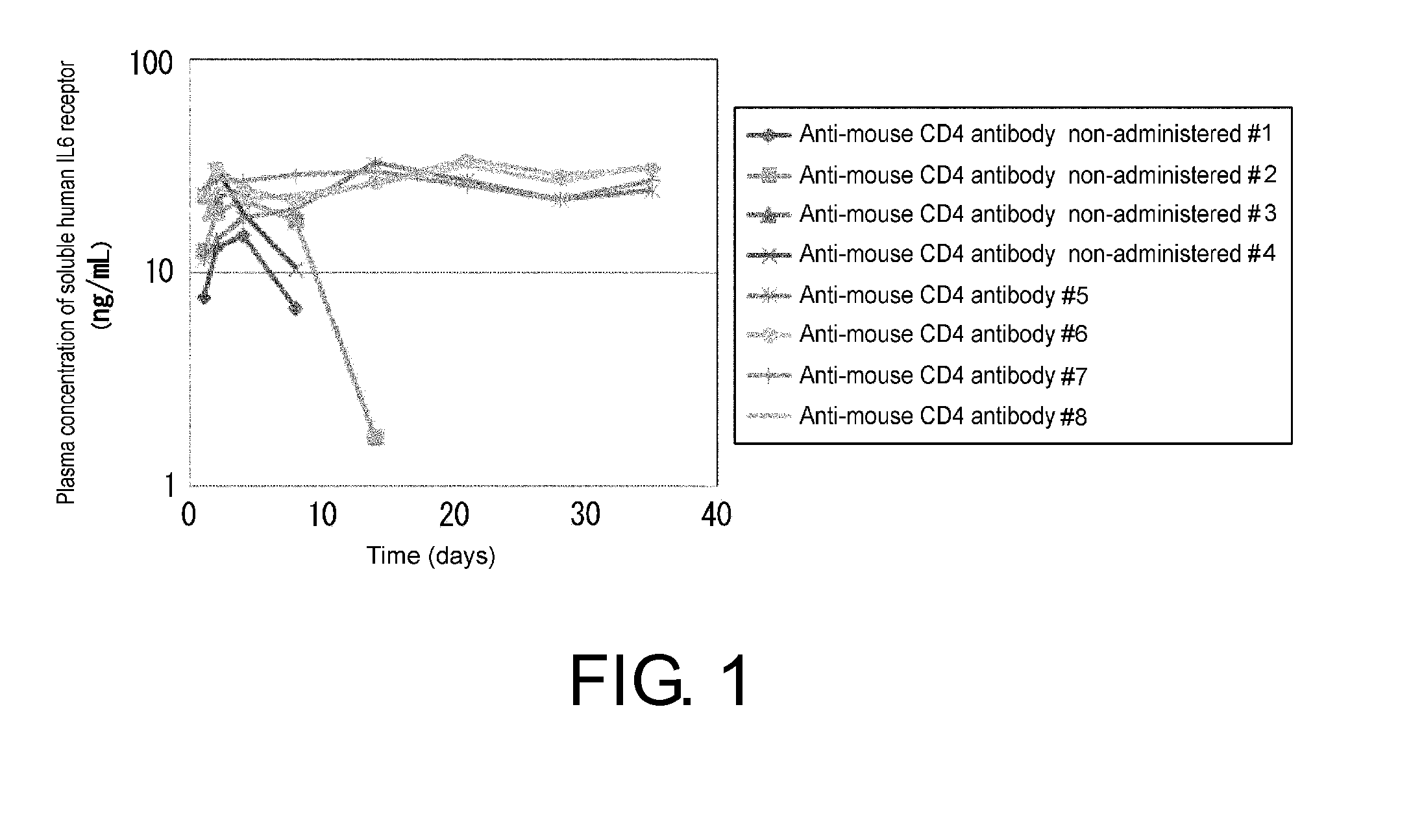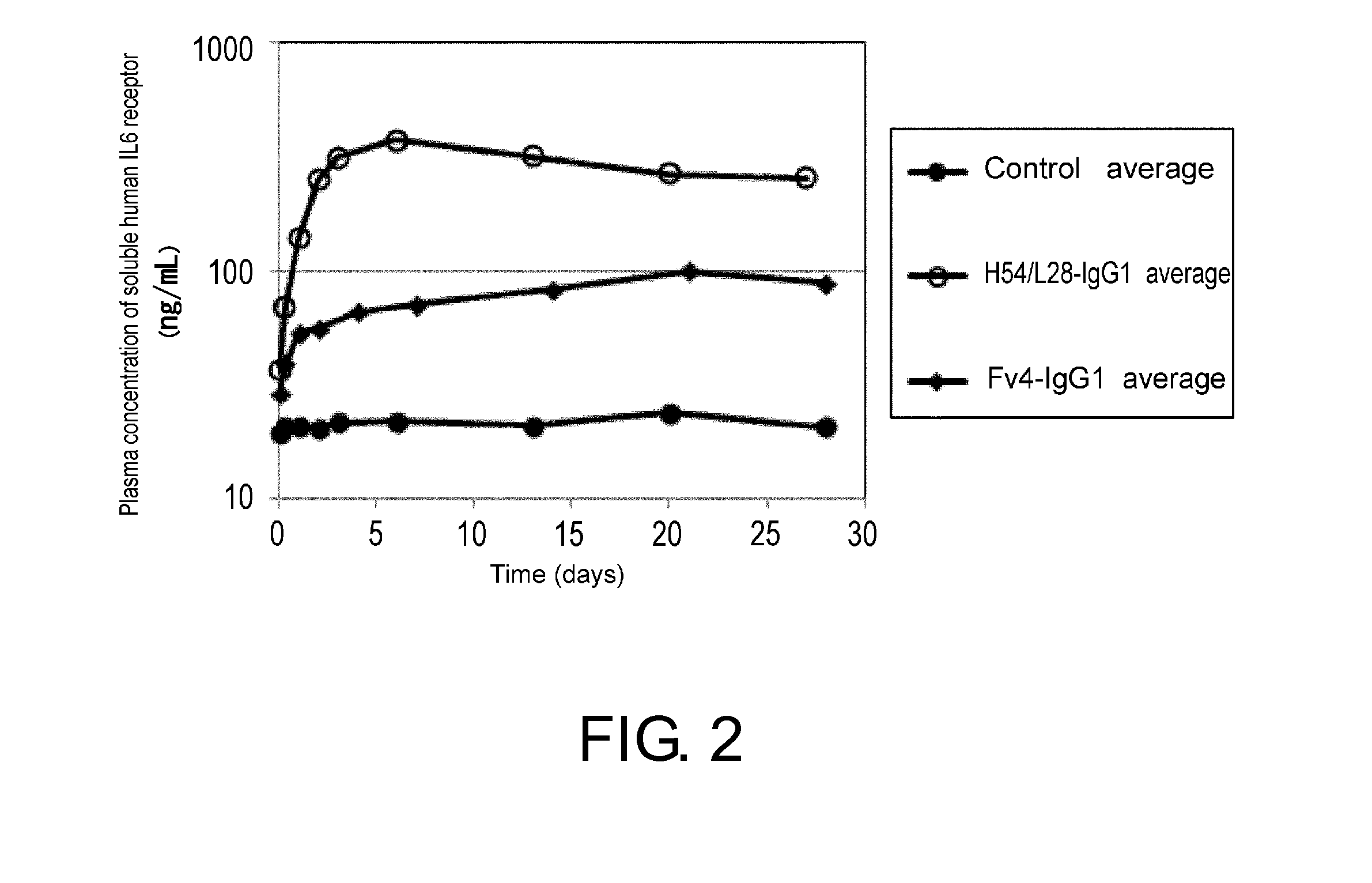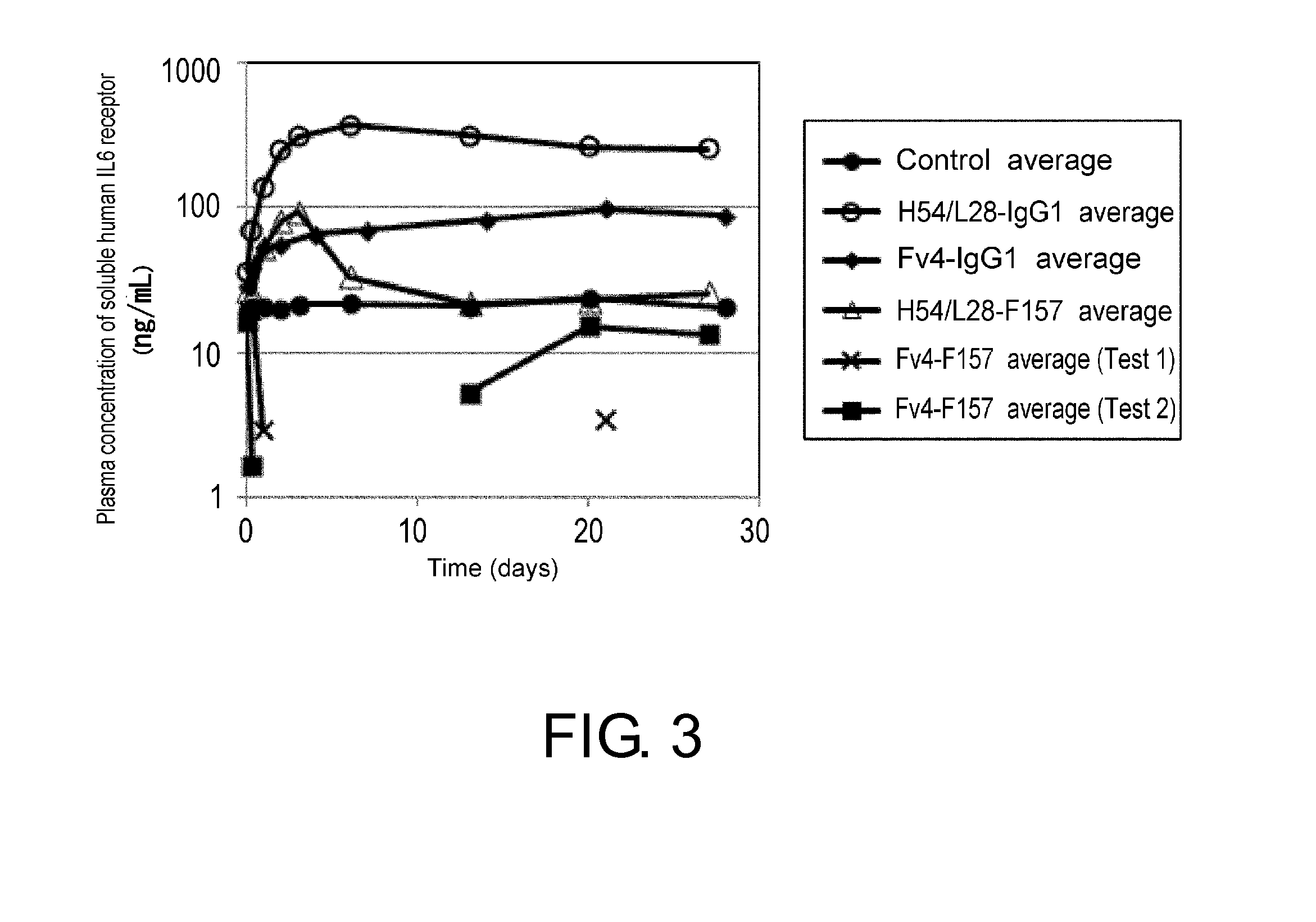Antigen-binding molecule inducing immune response to target antigen
an antigen-inducing molecule and antibody technology, applied in the field of pharmaceutical compositions, can solve the problems of low immunogenicity of tumor cells, inability of immune system to eliminate tumors expressing such neoepitopes, and weak tumor immunogenicity in humans, and achieve the effect of effective cancer treatmen
- Summary
- Abstract
- Description
- Claims
- Application Information
AI Technical Summary
Benefits of technology
Problems solved by technology
Method used
Image
Examples
example 1
Production of a Mouse Model that is Immune Tolerant to Human IL-6 Receptor
[0474]Since the IL-6 receptor is highly expressed in myeloma, for which the growth factor is the ligand IL-6, anti-human IL-6 receptor antibodies are known to exhibit antitumor effects in an immunodeficient mouse xenograft model of human myeloma (Eur. J. Immunol. 22, 1989-93 (1992)). If mouse anti-IL-6 receptor antibody production can be induced by administering anti-IL-6 receptor antibodies to mice, those anti-IL-6 receptor antibodies may induce acquired immunity and may be shown to be useful as cancer vaccines.
[0475]However, since the mouse immune functions do not work in immunodeficient mice that are used as the antitumor models, inducing acquired immunity is impossible. Even if soluble human IL-6 receptors are administered to normal mice, mouse-anti-human IL-6 receptor antibodies will be quickly produced against the human IL-6 receptors which are foreign substances for the mice. Therefore, normal mice cann...
example 2
Comparison of the Acquired Immunity-Inducing Effects by Normal Anti-IL-6 Receptor Antibodies and pH-Dependent Anti-Human IL-6 Receptor Antibodies in Normal Mouse Model with Immune Tolerance for the Human IL-6 Receptor
[0484]For induction of acquired immunity to a target antigen, the target antigen taken up into antigen-presenting cells must be appropriately degraded by lysosomes in the cells, and fragmented peptides of the target antigen must undergo antigen presentation by binding to MHC class I or MHC class II. It is considered that the larger the number of peptides presented as antigens, the stronger the induction of immunity; thus, as a method for enhancing induction of acquired immunity to the target antigen, a method for sending a larger number of the target antigen into the antigen-presenting cells was considered.
[0485]Ordinarily, when an antigen is incorporated non-specifically into an antigen-presenting cell, it is transferred as is from the endosome to the lysosome, and the...
example 3
Effects of pH-Dependent IL-6 Receptor Binding and Enhancement of FcRn Binding at pH7.4 on Acquired Immunity-Inducing Effects in Human FcRn Transgenic Mouse Model with Immune Tolerance for the Human IL-6 Receptor
(3-1) Summary
[0490]In Example 2, it was confirmed that an ordinary IgG1 antibody and an IgG1 antibody with pH-dependent binding cannot induce acquired immunity against a target antigen. On the other hand, as a method for enhancing the immunogenicity of a T-cell epitope peptide, a method of fusing the T-cell epitope peptide with Fc and then enhancing the binding of the Fc portion to FcRn at pH 7.4 so that more T-cell epitope peptides are transferred to lysosomes, has been reported recently (J. Immunol. 181, 7550-61 (2008)). Since FcRn is expressed on antigen-presenting cells, enhancing binding of the Fc portion to FcRn at pH7.4 may promote antigen presentation of the T-cell epitope peptide. However, since the molecule disclosed in this method, which has an antigenic peptide di...
PUM
| Property | Measurement | Unit |
|---|---|---|
| concentration | aaaaa | aaaaa |
| ion concentration | aaaaa | aaaaa |
| pH | aaaaa | aaaaa |
Abstract
Description
Claims
Application Information
 Login to View More
Login to View More - R&D
- Intellectual Property
- Life Sciences
- Materials
- Tech Scout
- Unparalleled Data Quality
- Higher Quality Content
- 60% Fewer Hallucinations
Browse by: Latest US Patents, China's latest patents, Technical Efficacy Thesaurus, Application Domain, Technology Topic, Popular Technical Reports.
© 2025 PatSnap. All rights reserved.Legal|Privacy policy|Modern Slavery Act Transparency Statement|Sitemap|About US| Contact US: help@patsnap.com



